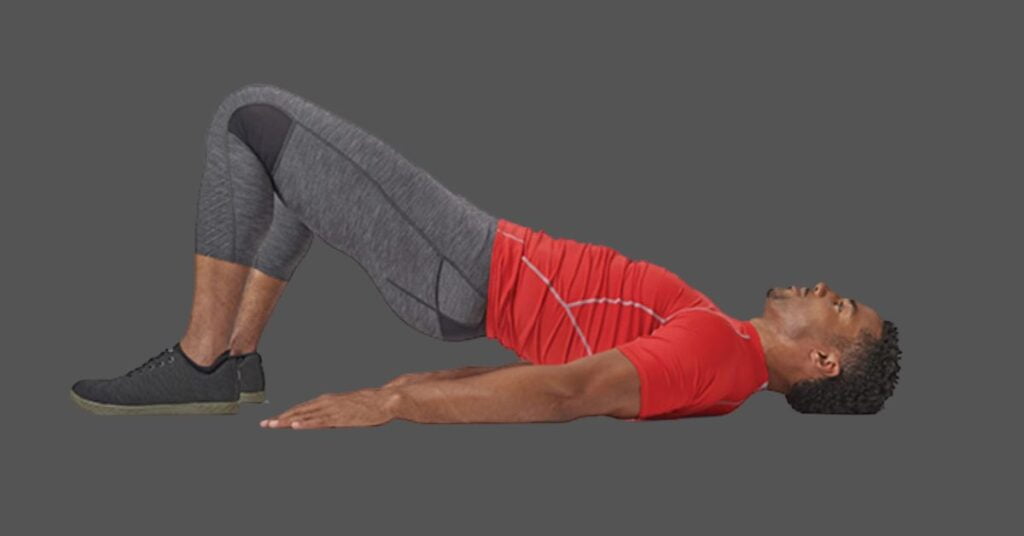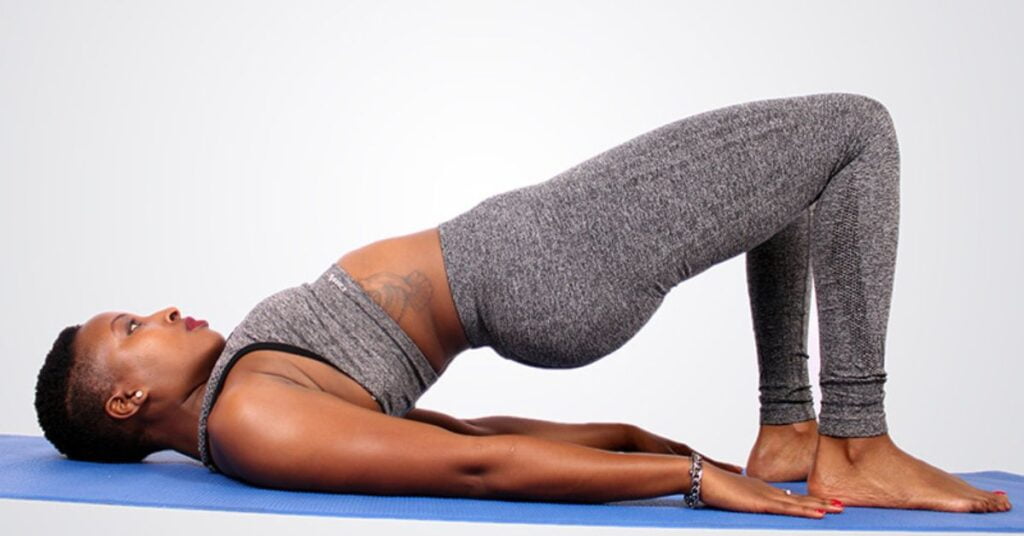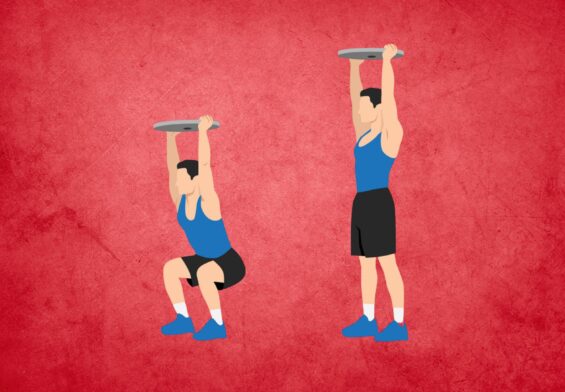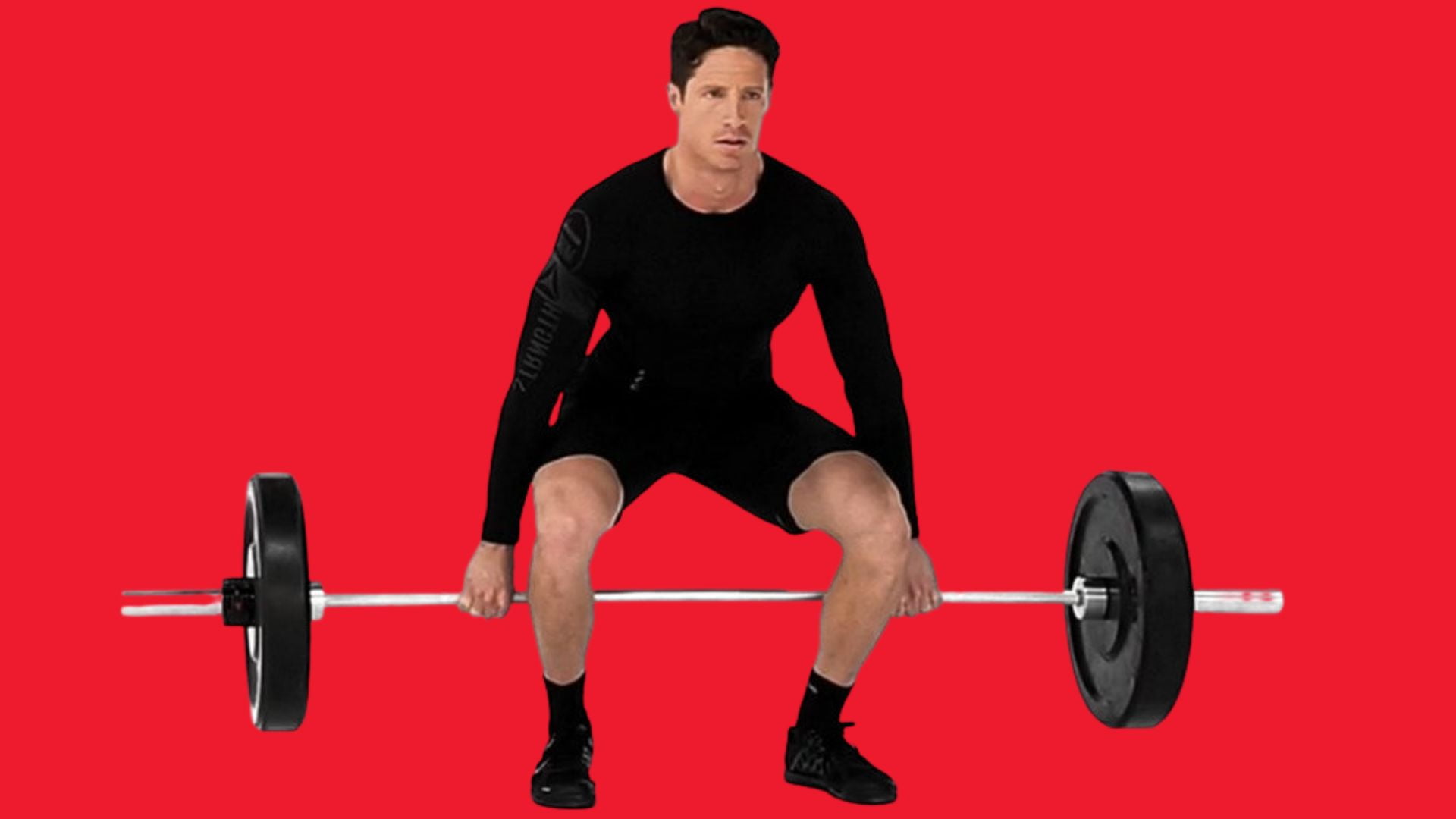
Glute Bridge: Build Strong Glutes with Ease
The glute bridge is a multi-faceted workout that’s challenging and an effective exercise. It’s an ideal supplement to any exercise routine, no matter your fitness level or age. This exercise concentrates on the rear of your legs, also known as the posterior chain. The primary movers in your posterior chain are glutes and hamstrings.
These strong muscles extend across your back and provide most of the energy the lower body creates. Because they’re so strong, they require a great deal of energy to perform. You’ll burn plenty of energy when you incorporate them into aerobic activities like biking and running. This is a great option for those who want to reach fitness goals, such as building the strength of their bodies, dropping weight, or reducing.
The strength of your back chain is an important part of increasing the strength of your lower back and core stability. When you perform it properly and with good posture, the glute bridge could improve the strength of the muscles surrounding your spinal column that improve your posture.
This type of move requires no equipment and requires very little space. You only need a place to lay down. It’s also an easy move, ideal for people suffering from hip or knee pain.
The Glute Bridge
The glute bridge, also known as lifting pelvic muscles, provide exercise that targets your side of the hips, legs, and gluteal muscle. However, they also strengthen your whole body. Although they don’t require any apparatus, this exercise is highly efficient for the whole lower part of your body. The glute bridge exercise is highly suitable for those just starting out because it’s simple. You can perform it on mats at home or in the fitness center. You’ll see that even one or two repetitions can create a lot of strain upon your muscles. If you’re searching for exercises for the glute and leg that make you sweat, you must certainly give it a shot.
The Glute Bridge: Working Muscles

Primary Muscle Group
The glute bridge works primarily on the gluteal muscles, specifically the gluteus maximus, gluteus medius, and gluteus minimus.
The glutes are one the most powerful muscles found in the human body. This exercise can help strengthen the gluteus muscles and strengthen them.
Secondary Muscle Group
Although the glutes are the primary driver in the glute bridge, this exercise also engages the hamstrings muscles.
The glute bridge also strengthens deep core muscles like the transverse abdominis, which helps stabilize your abdominal area during the exercise movement.
The Glute Bridge: Benefits

#1 Stronger Glutes
The glute bridge is a great way to increase the strength of your lower body. A stronger glute bridge will improve your performance when performing different exercises at the fitness center.
Suppose you want to increase your deadlift or squat strength to the max. In that case, the glute bridge could be an excellent supplementary exercise.
The stronger gluteal muscles enhance your performance by performing athletic activities like running and jumping, relying on the lower body’s explosiveness.
#2 Posture Change
Many people are shocked to discover that hip flexors that are tight or weak could be the reason for poor posture.
The tight hip flexors in your hips cause your lower back muscles to become over-active and cause back pain or stiffness.
This back tightness could make you slouch, particularly when sitting at your desk.
The glute bridge is a great way to strengthen and loosen your hip flexors. This can relieve pressure on your lower back and assist you in keeping your posture correct.
#3 Improved Aesthetics
You may be trying to build larger muscles, more defined, or toned glutes. The glute bridge could aid you in reaching your goals.
It is an isolation workout that can help you create a smooth, well-rounded look. We’ll learn how to do the glute bridge now.
The Glute Bridge: Instructions
Equipment
For your glute bridge exercise, you only require your body weight.
Setup
- Lay on your back, with your arms at your sides, knees bent, and palms facing downwards.
- Bring your belly button towards your spine, allowing you to brace your core. Lower back muscles should lie level on the floor.
Instructions
- Engage your glutes to raise your hips off the floor to the highest they go.
- Press your glutes from the floor to the top and slowly return to your starting position.
- Repeat this movement for the desired number of repetitions.
Recommendation:
The goal is to complete 3-4 sets of glute bridges in 12-15 repetitions.
The Glute Bridge: Mistakes

Like any exercise, remember some things when doing the glute bridge. Even if the right method takes a bit of time and requires some practice, it is essential to focus on your technique and execution. That’s the best way to be sure you don’t hurt yourself and will maximize the benefits of the workout. Here are some suggestions for the most commonly made errors made by the glute bridge to ensure that everything goes smoothly.
#1 Take Deep Breath And Breathe Inappropriately
Proper breathing is crucial for an effective exercise (no matter what!). The general rule is: Exhale whenever you work hard and breathe in when it becomes more comfortable again. In this way, you breathe in when you lift your pelvis and exhale while you lower your pelvis. Most of the time, we breathe the opposite side, but you’ll see that you’ll be able to breathe properly over time.
#2 Do Not Breathe In A Forced Way
Like any exercise, it is important to avoid compressing your breathing. It is common to keep our breath in during intense exercises. This causes blood to flow towards the top of your head. This could make you feel lightheaded or faint. Additionally, it won’t properly provide your muscles with enough oxygen. So ensure that you continue to breathe when you enter your bridges.
#3 Maintain Your Back Straight
The glute bridge also provides an effective exercise for your lower back. Your abdominal muscles must be engaged throughout the workout. If your abdomen isn’t fully engaged, you may be prone to an unnaturally hunched back when doing your the glute bridge. A simple way to determine whether you’re doing this exercise properly is to videotape yourself doing the exercise. You can then check whether the back is straight and should you need to adjust your back arched.
#4 Keep Your Head Down
In a challenging exercise, we can be prone to raise our heads away from our mat. Therefore, make sure your head remains resting on the floor throughout the entire workout. Make sure to keep your eye on your ceiling. So, you’re treating the neck as an extension, and the chance of injury is very low.
#5 Your Legs Should Be Hip-Width Apart
If you lift your pelvis, you could inadvertently trigger your knees to drop into each other. If you tilt your toes a little to the side, your knees will naturally extend outwards. Therefore, ensure that the feet are flat and the hips are spaced, and leave one two-foot gap between the knees when you start. If you have trouble with this, you could wedge tennis balls or a T-shirt rolled up between the knees.
#6 Press Your Feet With Your Feet
Many people have glute bridges in their thighs but not their hamstrings or bottom. If you feel this way about yourself, ensure that you deliberately take off your heel. You can assist by lifting your toes off of the ground. Your arms must remain in a straight line next to you. If you feel you’re pushing yourself away using them, angle your arms to 90 °. This reduces the contact surface, so you’re less likely to lift with them.
The Glute Bridge: Variations
#1 Glute Bridge Hold
This glute hold exercise is a simple alternative to the traditional glute bridge. Maintaining the same form, you have to keep the bridge to the top of each rep for the amount of time you’d like.
This will aid in building up metabolic stress, improve glute hypertrophy, and boost the strength of your hips.
#2 Weighted Glute Bridge
If you’re looking to push yourself to the limit, then weighted glute bridge is the perfect choice for you.
Pick up a ball of medicine or dumbbell, kettlebell, barbell, plate, or another type of resistance. Put the object on your lower abdominal or pelvic area.
Complete the glute bridge in a similar form to the variation using bodyweight.
The Glute Bridge: Alternatives
If you liked your the glute bridge, make sure to check out these glute exercise variations to boost the lower body workout:
#1 Donkey Kicks
Take a position on all fours, with your hands placed directly beneath your shoulders. Keep your abs in place, and then extend your leg backward as far as you can.
You can squeeze your glutes as you slowly return to your starting position. Switch legs, and repeat!
#2 Back Elevated Hip Thrust
You’ll require an area for a couch, bench, or a similar surface for this hip thrust variation.
Place your upper back on the elevated surface, and then place your feet down on the floor. Engage your glutes and abs to push upwards till your back is equal to the ground.
Do a squeezing of your glutes at the top. Slowly return to the starting point. Repeat!
#3 Leg Extended Hip Thrust
Lying on your back, legs bent at knees, arms at your sides, your palms in the direction of downwards. Straighten one leg, and squeeze your glutes, pushing your hips upwards towards the ceiling.
Stop at the top, then slowly return to your starting position. Change legs again and repeat!
Sets Of Training And Repetitions
The number of repetitions and sets you perform will differ according to your individual goals. When preparing a workout plan to build up your muscles, you should be within the hypertrophy range. That means you need to be doing between 8-12 reps and 3-4 sets. If you’re seeking to increase your fitness strength, 3 – 5 repetitions suffice. The most important thing to remember is to work yourself to the limit. To really move your lower body glute bridges, it is recommended to employ additional weight.
How To Add Weight To Glute Bridge?

The primary determinant to include weights in the exercise could boil down to one simple question What is your objective strength or stability? If stability is the goal, you’re probably doing glute bridges to stimulate the glutes and strengthen the core stabilization. You’ll want to improve the movement through challenging stability in this instance instead of increasing your weight.
One instance of this process is to work toward the single-leg glute bridge. This is still a challenge for the glutes, but it will also create additional issues for the core while it helps stabilize the trunk.
Suppose you’re using glute bridges for strength to perform a resistance workout. In that case, it is possible to gradually increase the weight until your glutes grow stronger. Like every exercise, the correct development is crucial to decrease the chance of injuries and maximize the advantages. Begin with the bodyweight version, and then master the proper form first.
If you decide to add weights to this exercise, it is possible to start with just a single dumbbell or a sandbag on the hips. If you’re using a dumbbell, most people prefer to fold up a mat or some padding under the dumbbell to keep it from pressing against hip bone. Make sure you hold the weight when performing the exercise to ensure it doesn’t bounce back at you!
Pick a weight that enables you to do all the reps correctly and without putting pressure on other muscles (like the hamstrings and the low back) and try to assist in executing the exercise. If you can do another two reps in two sets while maintaining good technique, it’s time to raise the weight.
How Long Do I Have To Glute Bridges?
This workout can be an integral part of your warm-up routine because it’s an easy and fast method of activating the glutes. There’s no harm in doing glute bridges every day of the week to get your glutes moving. Suppose you are doing glute bridges to build strength. In that case, it’s recommended to take one or two recovery days between strength training sessions.
Glute bridges is a straightforward and efficient exercise that can be included in any workout routine!
What Is The Best Time To Raise The Level Of Difficulty?

Remember that you must always select a more difficult exercise for your workouts only if you are confident in your fitness level. A perfect technique is vital to get the results you want. If you’re uncertain, film yourself while exercising to be more aware of how you appear and then move up to a more advanced fitness level with confidence.
It is also recommended that you always perform some warm-up sets using the weight of a lighter or your own weight first, regardless of your level. Only one or two sets of 15 to 20 repetitions are sufficient. Warm-up exercises are extremely vital. They increase blood flow for your muscle and mobilize joints to avoid injuries. They also serve to warm up your nervous system’s central nerves to prepare you for the intensity of the workout.
Hip Thrusts Vs Glute Bridges
The hip thrust and the glute bridge are both efficient exercises for exercising the glutes. Glute bridges are often used as a bodyweight exercise to stimulate the glutes. It is often used as an exercise for strengthening the glutes using a barbell loaded over the hips.
The major difference between hip thrust and glute bridge is how they are performed. The glute bridge is done on the floor, whereas the thrust for hips is executed using the upper back leaning against a bench and feet placed flat in the flooring.
Since the shoulders are raised on the bench, there is more hip flexion (more hip bend) during the movement of the hips, which results in a greater stretch of the glutes thanks to the greater range of movement. The glutes must be a bit more active when they are thrusting in the hips instead of the glute bridge.
Last Words
The glute bridge can be a beneficial exercise that strengthens your gluteal muscles, hamstrings, and abdominal and calf muscles.
You can practice them in fitness centers or in your home. All you require is a mat and some motivation.
Maintain the back straight, and keep your abs muscles tight to ensure you don’t arch your back.
It is extremely adaptable and is easily altered to make it slightly more challenging. You can perform your glute bridge using just one leg employing an additional weight.











